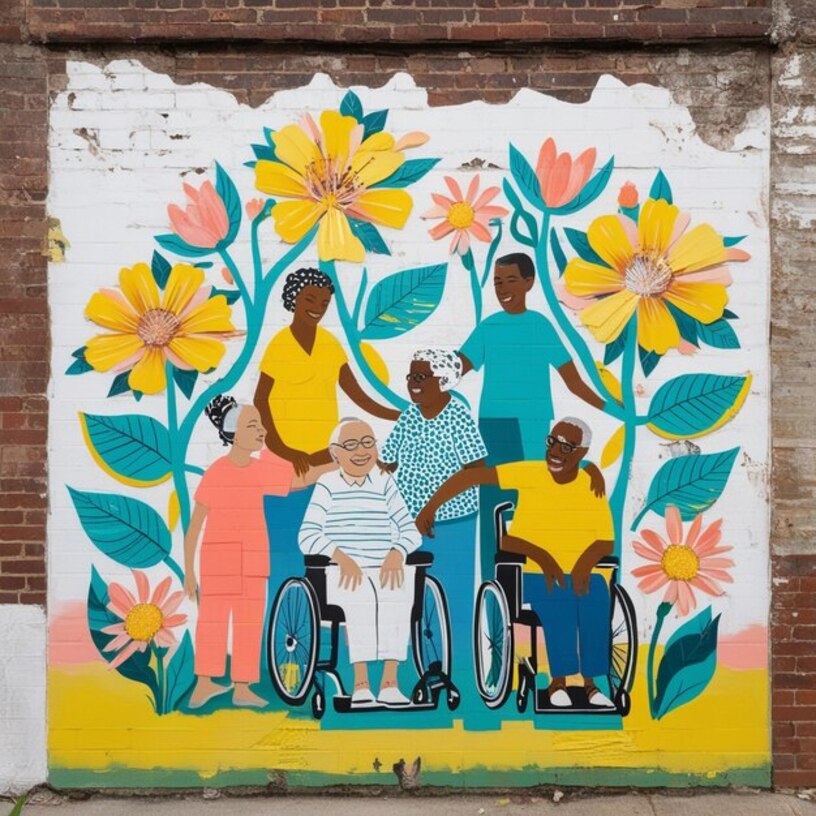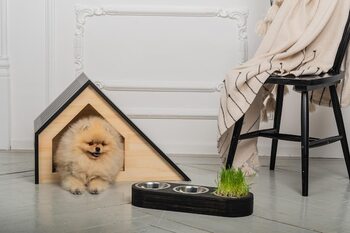Urban spaces: design that celebrates diversity and creativity

Urban spaces: design that celebrates diversity and creativity is an invitation to explore how the urban environment can be a vibrant reflection of our identities. In this article, we will discover how the design of public spaces fosters inclusion, inspires imagination, and transforms common areas into true havens of creativity. From colorful murals to community gardens, every corner has a story to tell, making our cities places where everyone can thrive and feel part of something larger. Join me on this journey through spaces that celebrate our diversity!
The importance of inclusive design in modern cities
Inclusive design in modern cities is essential to ensure that all citizens, regardless of their abilities, ethnicities, or socioeconomic backgrounds, can enjoy and benefit from public spaces. By creating accessible and welcoming environments, active participation from the entire community is encouraged, promoting a sense of belonging and social cohesion. This type of design not only removes physical barriers but also considers the emotional and cultural needs of individuals, allowing each person to feel seen and valued. Thus, urban spaces transform into places where diversity is celebrated in all its forms.
Additionally, inclusive design contributes to collective creativity by providing platforms for diverse artistic and cultural expressions. By integrating elements such as interactive installations, adapted recreational areas, and spaces for community events, interaction among different social groups is stimulated. This not only enriches the urban experience but also inspires residents to collaborate on projects that reflect their shared identity. In this context, our cities can become true laboratories of social innovation where every voice finds its echo and every idea can flourish.
2. Murals and street art: cultural expressions in the streets
Murals and street art are visual manifestations that add a unique dimension to urban spaces, turning streets into open-air galleries. These works not only beautify the environment but also tell stories of the community, reflecting its history, culture, and aspirations. Local artists often use their talents to convey messages about social, political, or environmental issues, creating a dialogue between the inhabitants and their surroundings. This type of art transforms gray walls into vibrant expressions of collective identity, inviting everyone to reflect and connect with what is around them.
In addition to being aesthetically pleasing, murals and street art promote inclusion and community engagement. Collaborative projects invite residents from diverse backgrounds to contribute their creative visions, turning artistic creation into a shared effort that brings people together. By involving different groups in the design and execution process, greater social cohesion is fostered and cultural differences are celebrated. Thus, each mural becomes a symbol of diversity and innovation, reminding us that our cities are living canvases where every stroke tells an essential part of our shared history.
3. Community parks: nature and urban coexistence
Community parks are an essential element in the structure of our cities, acting as green lungs that not only beautify the urban landscape but also promote social interaction and emotional well-being. These spaces provide a respite from the city bustle, inviting citizens to enjoy outdoor activities, from family picnics to sunrise yoga. Moreover, their inclusive design allows people of all ages and abilities to gather and share meaningful moments, creating a sense of belonging within the community.
The incorporation of natural elements in community parks fosters an environment conducive to coexistence and mutual learning. Native gardens, accessible pathways, and adapted recreational areas are just some features that reflect the commitment to sustainability and diversity. By promoting cultural events and playful activities, these spaces become nerve centers where local traditions are celebrated and collective creativity is instigated. Thus, community parks not only enrich our physical environment; they also nurture our social connections and strengthen the cultural fabric of our community.
4. Multifunctional spaces: adaptability for everyone
Adaptability in urban space design is essential to respond to the diverse needs of its inhabitants. By creating multifunctional spaces, a single place can serve multiple purposes: from play and sports areas to zones for cultural events and community markets. This versatility not only maximizes space usage but also encourages interaction among different groups, thus fostering a sense of community and belonging. A park can be transformed into an outdoor cinema on summer nights or into a local market on weekends, inviting everyone to participate and enjoy.
In addition, multifunctional spaces are an effective solution to the growing urbanization and lack of available land in cities. By rethinking how we use every square meter, elements such as modular furniture, interactive green areas, and accessible technology can be integrated to respond to the changing needs of the population. This not only improves urban quality of life but also ensures that all individuals, regardless of their age or background, can find a place where they feel comfortable and connected. Ultimately, these spaces become true epicenters of creativity and inclusion, celebrating the diversity present in our communities.
5. Sustainable architecture: beauty with environmental purpose
Sustainable architecture stands as a fundamental pillar in the creation of urban spaces that are not only aesthetically pleasing but also environmentally responsible. This approach promotes the use of recycled materials, energy-efficient technologies, and designs that integrate nature into their essence. By incorporating elements such as green roofs, rainwater harvesting systems, and solar energy, buildings not only minimize their ecological footprint but also become true works of art that enhance the urban landscape. Sustainable architecture demonstrates that it is possible to merge beauty and functionality, creating environments that respect and celebrate our natural surroundings.
Additionally, the inclusion of green spaces within urban architectural design fosters a deeper connection between communities and their environment. These spaces not only serve as lungs for cities but also provide residents with places to relax, socialize, and engage in recreational activities. Community gardens, accessible parks, and urban plazas are clear examples of how sustainable planning can transform neglected areas into vibrant community centers. Thus, architecture becomes a vehicle to promote healthy and sustainable lifestyles, where each person can find their place within the rich cultural tapestry of the city.
6. The influence of art on urban revitalization
The influence of art on urban revitalization is a phenomenon that has gained significant relevance in recent decades, becoming a powerful vehicle for social and aesthetic change. Artistic interventions, such as murals, sculptures, and performances, not only beautify neglected spaces but also create an emotional connection between residents and their environment. Through these creative expressions, entire neighborhoods can be transformed, fostering a sense of belonging that encourages residents to actively participate in community life. Thus, art becomes a universal language that transcends cultural and social differences.
In addition to beautifying and humanizing the urban landscape, art has the ability to tell local stories and rescue traditions that may be at risk of extinction. These artistic projects often involve the community from their conception to their execution, fostering collaboration and dialogue among different groups. By integrating the voices of diverse collectives into the artistic creation, inclusive narratives are built that reflect the rich cultural diversity of the cities. In this sense, art not only acts as a catalyst for the physical revitalization of urban space but also promotes a more equitable and inspiring culture where everyone can feel they have a place in the collective history.
7. Participatory design: building collaborative communities
Participatory design stands as a fundamental pillar in the construction of collaborative communities, where every voice matters and every idea has the potential to transform the environment. This approach invites citizens to actively engage in the process of creating public spaces, allowing their experiences and needs to be an integral part of the design. By fostering participation, deeper connections are generated between the inhabitants and their environment, creating not only physical places but also a sense of belonging and community that transcends the material.
Collaboration in urban design is not limited to occasional consultation; it involves a true commitment to co-creation. Community workshops, open forums, and interactive activities are effective tools for gathering ideas and aspirations from diverse demographic groups. In this way, the resulting spaces reflect a rich variety of cultural perspectives and personal identities, becoming authentic urban mosaics where everyone can find their place. This inclusive model not only enhances the aesthetic quality of public space but also empowers communities by giving them a voice in the future of their environment.
8. Emerging technologies: innovation in creative urban spaces
Emerging technologies are revolutionizing the way we interact with our urban environments, transforming creative spaces into true ecosystems of innovation. Tools like augmented reality and artificial intelligence are enabling designers and artists to express their ideas in ways that were previously unimaginable. For example, through mobile applications, citizens can visualize artistic interventions in real time, fostering a dynamic dialogue between art and the public. This interaction not only enriches the cultural experience but also empowers communities to actively participate in the transformation of their environment.
Furthermore, the use of sustainable technologies is redefining how we conceive urban design. The implementation of recycled materials and energy-efficient solutions not only minimizes environmental impact but also opens up a range of possibilities for creating innovative spaces that foster creativity. Automated vertical gardens or interactive installations powered by solar energy are tangible examples of how technology can be harmoniously integrated with urban design. These initiatives not only beautify our cities but also promote greater awareness of the importance of caring for our environment, thus celebrating both our cultural diversity and our collective responsibility towards the planet.



